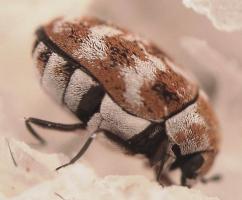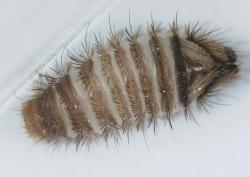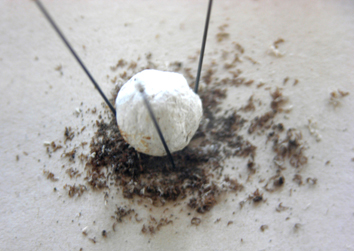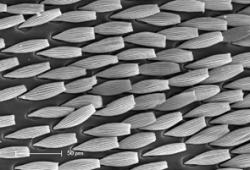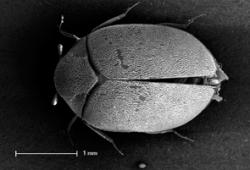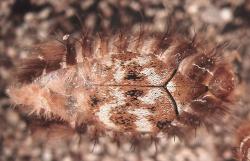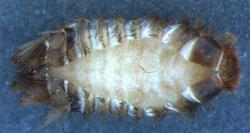Adult
Size
2 to 3.5 mm long
Aspect
Egg-like shape, quite round at the front and rear ends. Small head, and rather short, 11-articled antennae; the last 3 articles form a compact club.
Slightly round eyes (dented in Anthrenus flavipes) ; rather short legs that can fold back into their grooves on the ventral face.
Short pronotum, ending in a wide V-shape near the elytra.
Narrow elytra (1.4-fold more in length than in width), with parallel borders on ¾ of their length.
Elytron scales are narrow and filiform in A. verbasci whereas they are less elongate in A. museorum and round in A. flavipes.
Colour
Ochre yellow to brown background colour, with whitish or black blotches or stripes. Elytra have 3 wave-shaped, horizontal whitish stripes. The underside of the abdomen is mostly ash-grey, with dark blotches at the lateral end of each sternite.


 Anthrène bigarré des tapis ; Anthrène à bandes
Anthrène bigarré des tapis ; Anthrène à bandes  Varied cabinet beetle ; Small cabinet beetle
Varied cabinet beetle ; Small cabinet beetle  Gorgojo de las alfombras
Gorgojo de las alfombras  Wollkrautblütenkäfer
Wollkrautblütenkäfer 